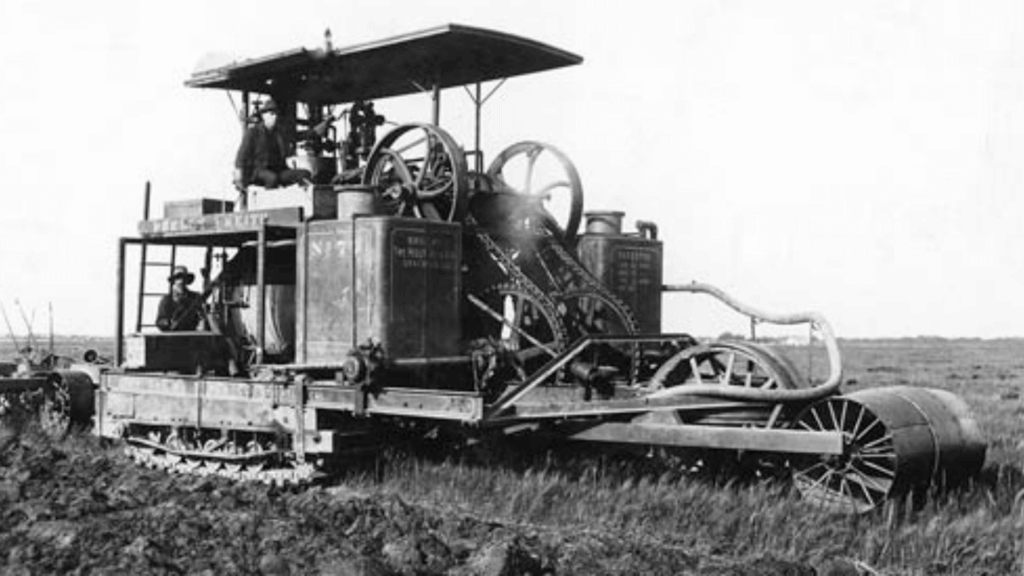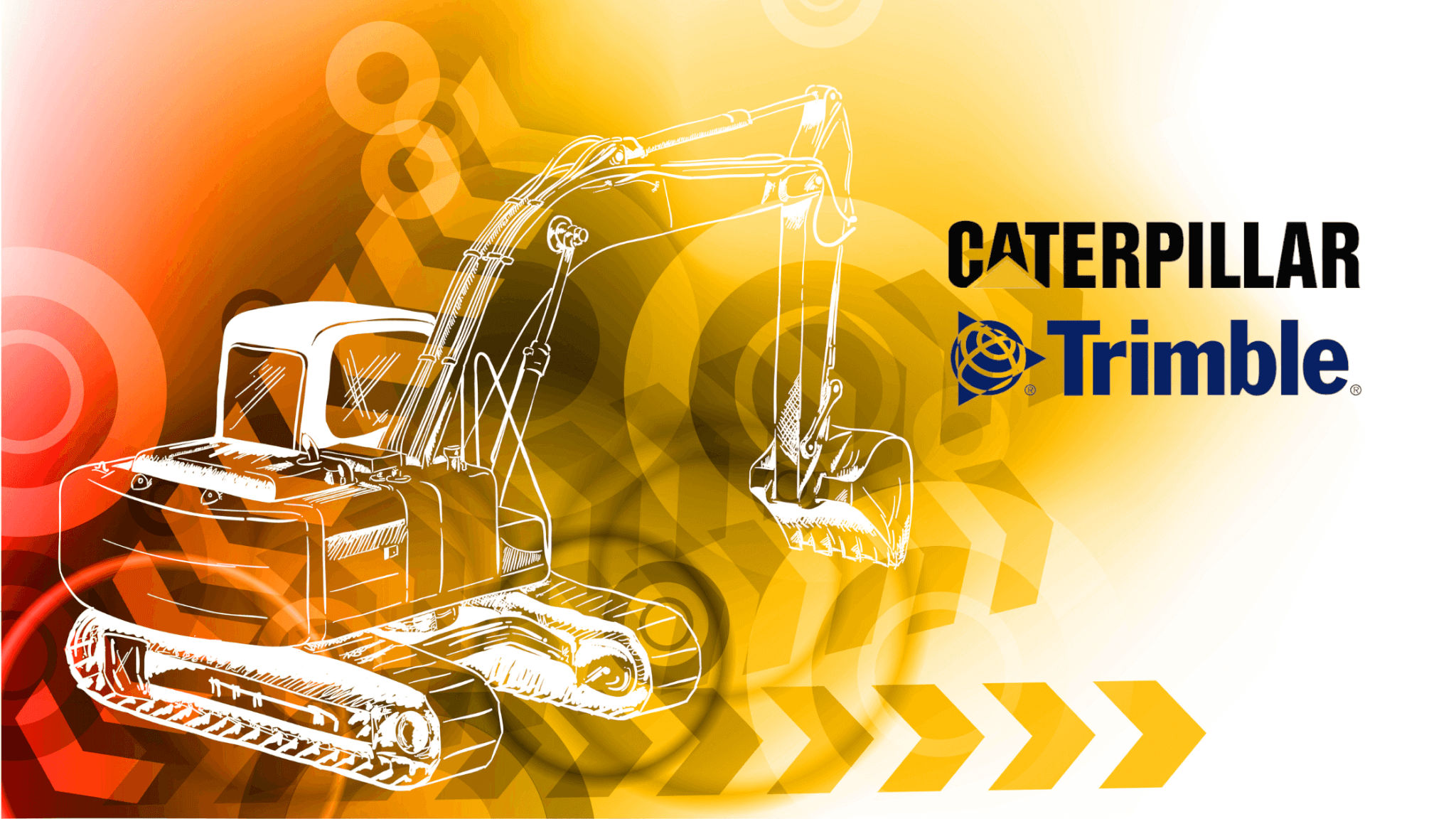In the construction world, two names stand out when it comes to innovation and impact—Caterpillar and Trimble. Both companies have a long history of pushing boundaries in technology and machinery, shaping how projects are built globally. But how exactly did they get to where they are now?
Foundations of Caterpillar

Caterpillar’s origins date back to the early 1900s when two tractor companies—Holt Manufacturing and Best Tractor Company—joined forces. At the time, farming and construction relied heavily on horse-drawn equipment, which struggled in muddy or soft terrain. Holt Manufacturing changed the game with the development of the first successful continuous track tractor—the “Caterpillar.” What set this machine apart was its ability to glide over rough surfaces that would typically bog down wheeled tractors. This made Caterpillar tractors ideal for farming, logging, and construction—especially in areas with challenging terrain.
Growth and expansion
After solidifying its place in agriculture and construction, Caterpillar expanded its product offerings during the mid-20th century. They began producing a wide range of machinery, including bulldozers, motor graders, and hydraulic excavators, which became essential in heavy construction projects worldwide. One of the standout moments in Caterpillar’s growth was during World War II when they supplied machinery for military infrastructure. This included building airstrips, roads, and bridges in challenging environments. Post-war, their machinery was still in high demand, especially for large-scale infrastructure projects like highways and dams. This period led to the company’s global expansion as it began exporting its equipment to Europe, Asia, and beyond.
By the 1960s, Caterpillar had become a recognized leader in the global heavy equipment industry. From there onwards, they continued introducing advanced products, including wheel loaders and backhoe loaders, which helped cement their dominance in the construction and mining sectors. These continued innovations also allowed them to tap into various industries, including energy, mining, and industrial markets, eventually making them one of the most valuable companies in the world.
Introduction of Trimble
While Caterpillar was making waves in heavy equipment, Trimble was pioneering something different—GPS (Global Positioning System) technology that revolutionized how industries approach positioning and location data. It all began when Trimble was founded in 1978. Before Trimble’s innovations, tasks like land surveying or plotting construction sites were labor-intensive and error-prone. With GPS, the errors decreased, and land surveying became far more efficient. Thanks to this use case, GPS systems quickly gained popularity, and Trimble expanded into new technology areas like 3D modeling, laser scanning, and automated machine guidance. This growth and innovation eventually led Caterpillar and Trimble to unite.
Caterpillar and Trimble: a partnership for innovation
The partnership between Caterpillar and Trimble began in 2002 with the formation of Caterpillar Trimble Control Technologies (CTCT), which focused on developing innovative grade control systems that drastically improved construction efficiency and job site safety. Before their collaboration, the construction industry relied heavily on manual measurements and approximations, often leading to inefficiencies and delays. By introducing automated grade control systems, the partnership allowed machinery to operate with precision, reducing the need for rework and optimizing fuel use.
Another critical element that made their joint venture stand out was Trimble’s GPS and positioning expertise combined with Caterpillar’s heavy machinery. This synergy gave birth to solutions like 3D machine control, which allowed construction managers to manage entire fleets remotely and in real-time, streamlining construction workflows. This level of innovation was a major breakthrough in the industry, saving both time and resources.
Impact on the construction industry
As their joint venture evolved, both companies benefited greatly. For Trimble, the partnership opened up broader distribution and integration into the heavy machinery market, giving them a more extensive reach within the construction industry. For Caterpillar, it allowed them to offer more advanced technological solutions to their customers, differentiating their machinery from competitors. With all these advancements, their machines are now widely recognized as some of the best in the world. They help reduce the environmental impact of construction projects by optimizing fuel efficiency and reducing material waste.
Current operations and outlook

Today, the Caterpillar Trimble Control Technologies (CTCT) partnership continues to push construction technology forward. In early 2024, Caterpillar and Trimble extended their partnership to bring even more advanced digital tools to the construction industry. One of their main goals is to make it easier for different equipment brands to work together. Construction managers can mix and match machines from different manufacturers without sacrificing performance or efficiency. Trimble’s Construction One platform is a big part of this, offering software that helps companies manage everything from project planning to equipment maintenance.
In addition, both Caterpillar and Trimble are focused on making construction more sustainable and automated. Trimble’s Connect & Scale strategy aims to keep improving tools like automated machine controls, reducing fuel use and making projects more eco-friendly. Caterpillar is also working on incorporating greener technologies into its machines. In 2022, Caterpillar successfully demonstrated its first battery-electric large mining truck as part of its ongoing sustainability efforts. This innovation is part of Caterpillar’s broader goal to transition to cleaner energy solutions in the construction and mining industries.
With their sights set on greener, more automated solutions, both Caterpillar and Trimble are bringing in exciting changes to help us transition towards a more sustainable future in construction.
The question remains: How will these developments shape the future of the construction, mining, and energy sectors?
If you enjoyed this article and want to stay updated on the latest industry trends and innovations, subscribe to our weekly newsletter.


